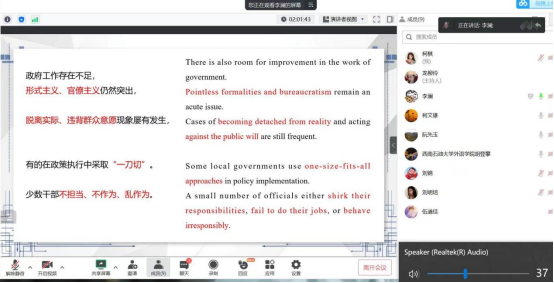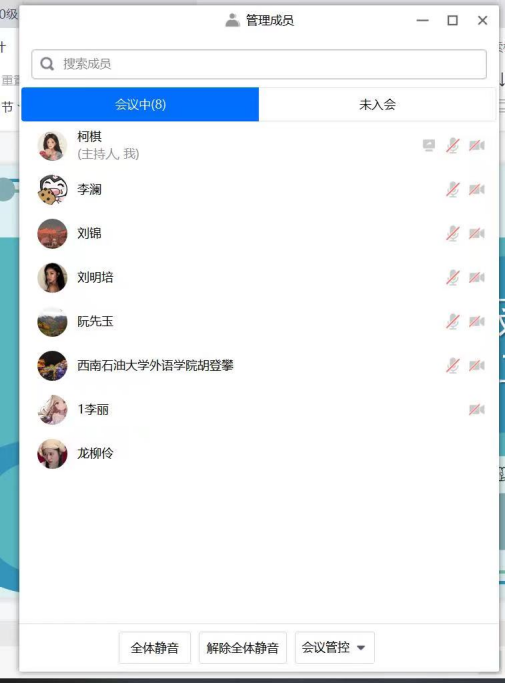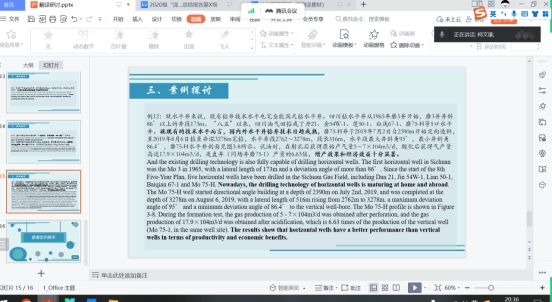汇报时间:2023.3.30 19:00-20:30
汇报地点:腾讯会议,会议号818-706-788
汇报学生:向柯棋
指导教师:柯文雄
汇报题目:《钻井工程可行性研究报告》(第一部分至第二部分第二章)
参与导师:柯文雄、阮先玉、胡登攀
内容简介:
该翻译文本选自钻井工程可行性研究报告是针对李家山气田李家沱气藏特点及施工难点制定的钻采方案,属于《李家山气田李家沱气藏开发方案》的组成部分。
该文本内容为:钻井方案设计原则及依据、已钻井概况(已完井井身结构、井斜情况、钻井液,、复杂情况、钻井难点)、丛式定向井和水平井钻井方案、地层压力特征及井身结构、复杂处理预案(沙溪庙出水处理预案、井斜控制、须家河煤层垮塌处理预案、嘉五裂缝溶洞性恶性井漏处理预案以及预防硫化氢处理预案)、生产套管强度设计以及固井工艺技术要求、油气层保护措施(油气层伤害评价以及李家沱鲕滩储层钻井过程中的保护方案)、采气工程方案设计依据(方案编制依据及技术思路、气田地质概况、流体性质、勘探情况及开发方案指标)、完井工程方案(完井方式选择、生产管柱选择、采气井口装置、井口安全阀及井下安全阀、射孔工艺方案、完井过程中的储层保护措施)。
文本特点:
1.专业性强。很多术语为几个词或一段话的浓缩,查证困难,需要查阅背景知识理解后翻译。如,“复杂时率”为“钻井工程复杂事故发生的频率”,“嘉五裂缝溶洞性井漏”为“嘉五地层特点为多裂缝和溶洞,地层的裂缝和溶洞会造成井漏”。在对钻井技术的表述上,中文和英文的表述也不是词典意义的简单对应,翻译时需要通过查阅英文钻井工程文本来确定。如,“水平井的水平段”对应“the lateral section of horizontal wells”,“试油”对应“formation test”。
2.多长句。该文本的长句由多个短句组成,短句之间重联系而不是连接,翻译时需要拆分长句,判断短句之间的联系,添加连接词。见案例探讨例4、5、6、8、9、11、12。
3.多省略。文本中多省略主语和宾语现象,翻译时需要按照英文表达习惯添加句子成分或用代词承接。见案例探讨例9、12。
4.多重复(意义)。该文本为中文文本,句子表达无词语形态的约束,句段中为避免歧义会使用不同的表达方式表述同一个意思,翻译时需要合并和删减来确保英文的简洁。见
案例探讨例6、12。
译文修改:
例1:
ST: 李家山构造已完钻井指标统计表明,李家1井处理须家河组垮塌复杂时率达16%,李家3井复杂时率高达27%,其它各井复杂时率在10%左右。
TT1: The statistics of the drilled wells in the Lijiashan Structure show that the time rate of the collapse of the Xujiahe Formation in the Lijia 1 well is 16%, the accident rate in the complicated conditions in Lijia 3 well is 27%, and in other wells it is about 10%.
TT2: The statistics of the drilled wells in the Lijiashan Structure show that the rate of time for dealing with the collapse of the Xujiahe Formation in the Lijia 1 well is 16%, the the rate of time for dealing with downhole complicated conditions in Lijia 3 well is 27%, and in other wells it is about 10%.
例2:
ST: 满足“少井高产、培育高产井”的要求。
TT1: To satisfy the requirement of “fewer wells and more high productivity wells”.
TT2: To adapt the strategy of “high production with few wells”.
例3:
ST: 李家山及滚子坪已完钻8口井采用4套井身结构方案,其主要区别在于技术套管244.5mm套管下深不同,其中244.5mm套管下至须家河顶部4口井(李家1、2、3、4)、244.5mm套管下至雷口坡顶1口(李家5)、244.5mm套管下至嘉四3口(李家6、7、8)。
TT1: In the eight drilled wells in Lijiashan and Gunziping, four sets of well structure schemes are used, and the main difference between these schemes is that the 244.5mm technical casing goes down to different depths. In Lijia 1, 2, 3, 4, the 244.5mm casing goes down to the top of the Xujiahe Formation; in Lijia 5, the 244.5mm casing goes down to the top of the Leikoupo Formation; and in Lijia 6, 7, 8, the 244.5mm casing goes down to the Jia-IV Formation.
TT2: With the main difference is that the 244.5mm technical casing goes down to different depths, four sets of well structure schemes are used in the eight drilled wells in Lijiashan and Gunziping. In Lijia 1, 2, 3, 4 wells, the 244.5mm casing goes down to the top of the Xujiahe Formation; in Lijia 5 well, the 244.5mm casing goes down to the top of the Leikoupo Formation; and in Lijia 6, 7, 8 wells, the 244.5mm casing goes down to the Jia-IV Formation.
研讨反思:
通过此次研讨,译者对如何让改进译文有了一定的认识:
1、技术性文本的翻译需要在掌握一定背景知识下进行,要改进译文,需要译者进一步阅读相关技术文本英文原著、平行文本,查找钻井工程技术的英文精准表达;
2、英文短语搭配需要准确,不能贸然使用近义词替换,要明确近义词之间的差异;
3、要确定全篇专有名词的一致性和规范性;
4、翻译时需要注意中英语序的差异性,表达要符合英文语序规范,避免冗余和中式英语。
照片:

